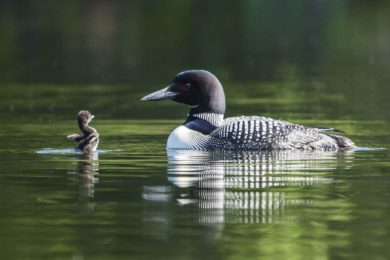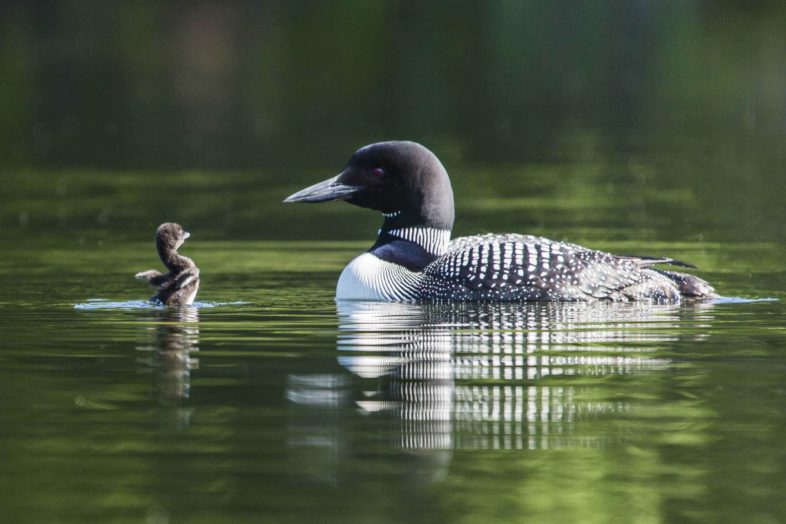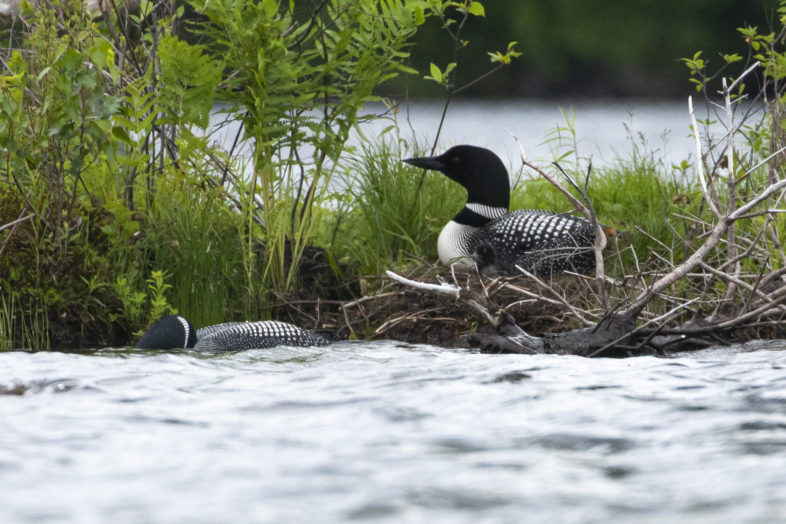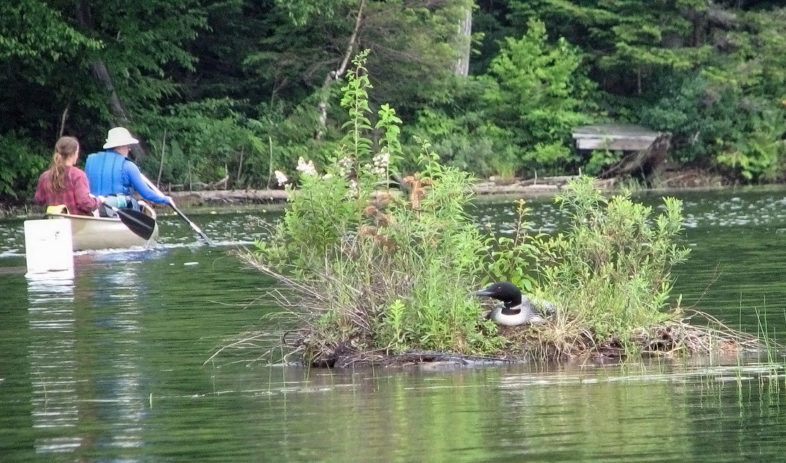
Common Loon and chick / © Paul Holmes
Hartford, VT – The U.S. Fish and Wildlife Service (USFWS) recently awarded the Vermont Center for Ecostudies (VCE) a five-year $446,393 grant to support the Vermont Loon Conservation Project (VLCP), a joint program between VCE and the Vermont Fish and Wildlife Department focused on Common Loon recovery and conservation in Vermont. VCE was one of six organizations in New England and New York selected through a competitive grant process to receive funding.
The grant is part of a larger settlement from the Bouchard B-120 oil spill that killed over 500 wintering loons off the Rhode Island and Massachusetts coasts in 2003.
“These funds were awarded to effectively replace the loons lost in that spill, as well as their offspring, an estimated 4,000 ‘loon years’ region-wide,” explains VCE Loon Biologist Eric Hanson. “Loon years refer to the lost reproductive potential over the typical lifespan of the 500 adults and their offspring.”
Thanks to VLCP and countless other community partners, Vermont’s Common Loon story is largely one of success. In 1987, only 12 breeding pairs were recorded in the state and Common Loons were added to the endangered species list. By 2005, VLCP’s combination of monitoring, targeted management activities, community involvement, and public outreach had helped the loons recover enough to be delisted. In recent years, Vermont has seen an annual average of 95 breeding loon pairs, with 96 reported in 2020.
While these improvements are encouraging, Vermont’s loons still face numerous threats. With the funds received from USFWS, VCE will work to improve loon populations impacted by the Bouchard oil spill across Vermont with the ultimate goals of increasing nesting success and reducing mortality. One approach will focus established management activities, such as nest warning signs and nesting rafts, on particularly vulnerable areas. “These include both territories with low productivity and high-risk sites where we have found management highly effective in reducing the negative effects of flooding and human disturbance,” says Hanson. VCE will also use some funds to improve rescue and rehabilitation of distressed loons, hopefully reducing individual mortality.
This grant will also allow VCE to implement lead tackle buy-back and monofilament collection programs within Vermont. Although the number of loons dying from lead poisoning has declined since half-ounce and smaller sinkers were banned, some loons are still affected. Over the past three years, six loons have died from lead fishing gear ingestion. Hanson anticipates that a buy-back program will help remove more of this gear from circulation and further reduce instances of lead poisoning in loons.
As with all VCE projects, community engagement is a cornerstone of VLCP. Each year, hundreds of volunteers across the state participate in monitoring efforts through regular lake surveys and VCE’s annual July LoonWatch event (this year on July 17). To ensure that this five-year grant has lasting impact, VCE will continue engaging volunteers, community stakeholders, and the general public in participating and taking charge of management activities as well as raising awareness about loon and lake conservation.
If you want to learn more about VCE’s Common Loon conservation efforts, please visit the Vermont Loon Conservation Project. If you are interested in loon monitoring opportunities and other ways to get involved, check out LoonWatch.
—END—
Images Available for Use

Common Loon and chick / © Paul Holmes

Nest on Kent Pond / © Paul Holmes

An incubating loon sits on a nesting raft on Norton Pond while a pair of canoers respect the nearby nest warning signs. Both rafts and signs are important management tools used for loon conservation in Vermont. © Eric Hanson
